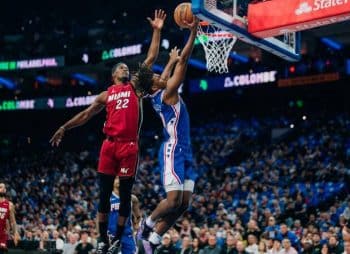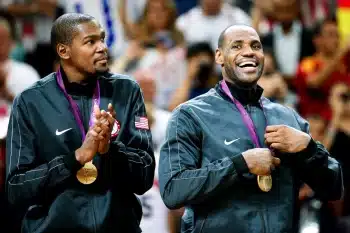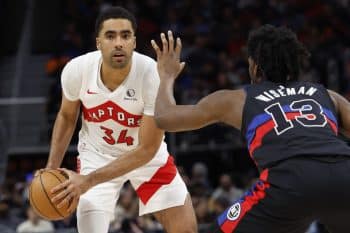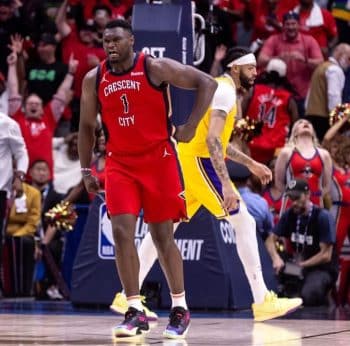NBA
Using Data to Identify Potential Rookie Steals
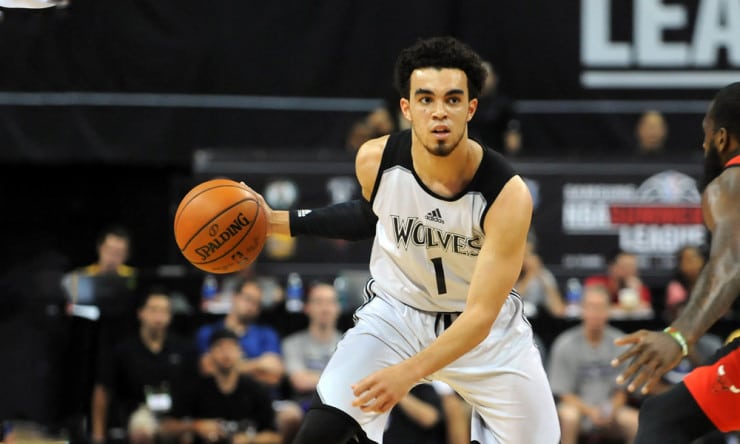
Nowhere is the influence of higher-level mathematics and predictive modeling, classified broadly by some as “analytics,” more noticeable in the NBA sphere than around draft time. So much of what makes this sort of data desirable on any stage is its ability to usefully aggregate groups of observations the human brain can’t possibly keep track of, and analyzing and projecting potential draftees is right up that alley. Even the most respected scouts in basketball can’t possibly keep track of 60 or more prospects’ worth of data, particularly elements the naked eye will always struggle to pick up – with translation to the NBA, be it from college or foreign play, chief among them.
A model that can reach back 20 or 30 years and offer a blueprint for how a given player’s skills might transfer to a higher level is incredibly valuable, and as such these have become more popular among smart NBA folks in recent years. And with the season now approaching and team fit a much clearer factor than the pre-draft process, now seems a good time to break down which impending rookies are viewed most positively by such models. In particular, we’ll try and focus on guys the numbers favor significantly over general scouting consensus – guys who were picked later than their figures might suggest they deserved to be. Two of my favorite models are Layne Vashro’s comprehensive predictive outputs and Kevin Pelton’s WARP projection model, which we’ll use as rough barometers along with a canvassed group of other outlets.
Kevon Looney, Golden State Warriors
Looney was all over a number of boards leading up to draft night, but a relatively consistent theme was numerical projections taking a liking to him nearly from the start. Vashro’s final EWP model ranked Looney sixth in the class, the third big off the board behind only Karl-Anthony Towns and Jahlil Okafor. Pelton’s model wasn’t quite as bullish, placing him 19th overall, which by draft day itself was roughly in line with what most popular consensus thought of the UCLA product.
Looney’s final draft slot was much lower than most expected, but it in part showcases areas where numerical models are incomplete (something their creators would be the first to admit, by the way). The concerns with Looney were all in areas that projections struggle to pick up – Looney’s difficult hip was a serious red flag for many front offices, with rumors even flying during draft week that a surgical procedure might keep him out for his entire rookie season (Looney’s camp has denied as much). There were also serious worries about his conditioning, an issue that plagued him at times with the Bruins.
He may have lost a few dollars long-term, but landing with the Warriors at pick No. 30 was, in a vacuum, one of the best outcomes Looney could hope for, especially if his physical issues are more legitimate than his camp has let on. Looney will have no early expectations whatsoever with the defending champs, a team that’s fully comfortable with their rotation across the board and could easily afford Looney time to rehab his hip if it were necessary. Even if not, the Warriors’ rotation is set to such a degree that they’d be completely unharmed if Looney isn’t ready for anything but garbage time minutes his entire rookie season.
If he gets a clean bill of health and can hit the floor, the Warriors may have found a steal. Looney was a dominant rebounder at UCLA and could bring more much-needed energy to a Warriors’ scheme that demands it across the board. Bench units featuring Looney and Festus Ezeli could be really interesting, though whether the rookie has the foot speed to check power forwards might limit things here a bit. But with the right development and proper medical attention, Golden State may have found a gem so late in the first round.
Delon Wright, Toronto Raptors
Both Vashro and Pelton’s models had Wright as a longtime sleeper pre-draft, as did virtually every numerically-based model I put eyes on. Vashro had him eighth, while Pelton’s WARP model placed him 14th – this while popular consensus typically had Wright as a very late first-rounder.
Part of Wright’s appeal is the multitude of NBA-level skills he possesses. He’s a fantastic passer, a good pick-and-roll operator, a lockdown defender with the length to check multiple positions in the NBA and one of the most mature players in the class. That these models ranked him so highly despite his status as one of the oldest players in the draft only hammers home how impressive his statistical translations were – the models typically deduct for older players based on less career-long production.
Wright’s chief concern is with his jumper, but that’s also part of the reason Vashro’s model is so high on him. Layne’s research has found jump-shooting to be one of the most variable areas in translating draft prospects to the NBA; that is, it’s a lot more common for a bad shooter to become a good shooter than for, say, a bad shot-blocker to become a great one at the next level. That’s no guarantee, but if such a well-rounded player as Wright could ever even become average from the floor, he’d be a real asset.
In Toronto (who selected him with the 20th overall pick), he’s another prospect who appears to have fallen into a great circumstance. He won’t be asked to carry things at any point with Kyle Lowry and DeMar DeRozan in town, but he’s NBA-ready and can play real minutes for a team that can badly use his perimeter defense and another capable ball-handler for second units with Lou Williams out the door. He could play alongside Lowry for spurts, and should work well as a plug-and-play option with some upside right out of the gate.
Tyus Jones, Minnesota Timberwolves
Despite a smaller stature – another element that often sees prospects docked by numerical models – Jones was another player the consensus (and his actual draft slot, No. 24 overall) had significantly lower than projections. That he rated so well while on a Duke team where he wasn’t even the second option is even more impressive, as another factor the models can occasionally struggle with is translating role from college to the NBA (though to be fair, Jones may have a ceiling of a second or third option in the big leagues anyway).
Jones is a solid shooter with good passing instincts, and if he can learn quickly to leverage his speed and make up for his size, he has potential as a very solid backup early on and could become a jitterbug rotation guy in the future. He’s intriguing insurance on Ricky Rubio in Minnesota, at least. There will be initial concerns with his defense and ability to run an offense alongside the likes of Rubio, Andrew Wiggins and eventually Karl-Anthony Towns, but if he develops the right way he could be an excellent complement for these stars down the line.
Christian Wood, Houston Rockets
Wood might be the single largest outlier between projection models and eventual draft result – both Vashro and Pelton had him in their respective top 20, but the UNLV product actually went undrafted amid serious concerns about his work ethic and character.
A case like this can be a chance for a well-run franchise to take a shot at molding a young player’s intangibles to their liking, which is exactly what Daryl Morey and the Rockets did by signing him to a training camp deal (which has the potential to become a partially guaranteed three-year deal, if he sticks).
Wood has several things going for him from an on-court standpoint: he’s very long, has great athleticism and has showed promise as an NBA-level rim protector. Worse cases than this have undergone significant maturation processes in the past, and if the Rockets could coax improvement in these areas out of him, they may have snagged a first-round talent without even making a draft pick. Of course, the flip side is always in play and perhaps even likely – Wood might not even see an NBA court this year, and it may take serious hustle for him to get a chance down the line. In either case, he’s an intriguing test study.
